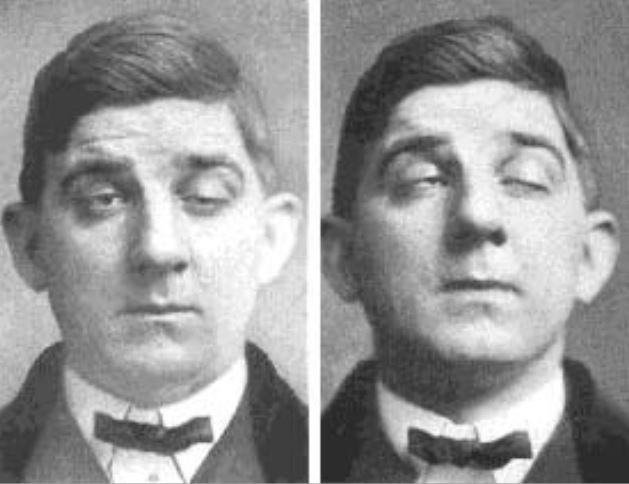Playlist
Show Playlist
Hide Playlist
Myasthenia Gravis: Antibody Testing – Diagnosis
-
Slides Strowd Myasthenia Gravis.pdf
-
Download Lecture Overview
00:01 So let's look a little bit more at the serologic testing for myasthenia gravis. 00:05 We said that approximately 85 to 90% of myasthenics will be seropositive. 00:09 They will have the presence of circulating antibodies. 00:13 The most common antibody is the acetylcholine receptor antibody. 00:17 And we can divide that antibody into three different types. 00:20 There is a binding, blocking, and modulating acetylcholine receptor antibody. 00:25 Let's look at what each of those antibodies does at the neuromuscular junction. 00:30 The binding antibody activates complement. 00:33 An activation of complement leads to loss of postsynaptic acetylcholine receptors. 00:37 You don't have as many acetylcholine receptors, and so you can't drive as much end-plate potential. 00:44 The blocking antibodies impair binding of acetylcholine. 00:48 They get in the way. 00:49 They obstruct the binding of acetylcholine to its postsynaptic receptor leading to poor muscle contraction. 00:56 And the modulating antibodies result in what's called antigenic modulation. 01:02 There's receptor endocytosis less receptors are available on the postsynaptic membrane. 01:07 and this results in clinical symptoms. 01:10 And the degree of antibody modulation correlates with the clinical severity of disease. 01:16 So let's look at each of these specifically. 01:19 What happens in the case of those binding antibodies? Acetylcholine receptor binding antibodies bind to the acetylcholine receptor. 01:27 It sits on the postsynaptic terminus on the muscle and drives muscles to contract. 01:34 When that binding antibody binds to acetylcholine or multiple acetylcholine receptors together, we see that complement is activated. 01:43 As a result of complement activation, the postsynaptic acetylcholine receptors are moved into the cell and degraded. 01:50 And so the end result is there are less acetylcholine receptors on the postsynaptic terminus on the muscle. 01:56 And there is less potential to drive an end-plate potential. 01:59 Less ability to activate that muscle. 02:03 What about the blocking antibodies? How do those work? Well, blocking antibodies are competitive antagonist of the postsynaptic acetylcholine receptor. 02:12 They find their way into the synaptic cleft, they bind to the acetylcholine receptor and prevent acetylcholine from binding to the acetylcholine receptor. 02:21 And therefore, they prevent end-plate potential activation and prevent muscle contraction. 02:27 And we can see that here auto antibodies to the acetylcholine receptor are binding and preventing muscle activation and contraction. 02:36 What about the modulating antibodies? How did they work? What is antigenic modulation? Well, here we see that signal-induced down regulation of protein expression occurs. 02:47 These antibodies bind to the acetylcholine receptor. 02:50 As a result of that binding, we see cross-linking of the acetylcholine receptors on the muscle membrane. 02:56 Those cross linked acetylcholine receptors are internalized by the cell they're recognized as abnormal and they're internalized and thus degraded. 03:05 And so again, you see a downregulation of the number of acetylcholine receptors that are on the muscle membrane. 03:12 And it takes much, much more activation of the nerve and the neuromuscular junction to drive muscle contraction.
About the Lecture
The lecture Myasthenia Gravis: Antibody Testing – Diagnosis by Roy Strowd, MD is from the course Disorders of the Neuromuscular Junctions.
Included Quiz Questions
Which of the following best describes the pathology that results from the AChR binding antibodies in myasthenia gravis?
- Attachment of anti-AChR antibodies to the AChR leads to complement activation and ultimate endocytosis and degradation of AChR.
- Antibodies act as competitive antagonists to the post-synaptic AChR.
- Antibodies lead to signal-induced down-regulation of protein expression.
- Cross-linking of AChR after antibody binding leads to internalization of the AChR in a complement independent manner.
- Binding AChR antibodies enter the synaptic cleft and act as competitive agonists to the post-synaptic AChR.
Which of the following actions describes the action of the anti-AChR blocking Ab?
- Impairs binding of ACh, leading to poor muscle contraction
- Cross-linking of AChR leading to complement activation and degradation of receptors
- Antigenic modulation occurs, leading to receptor endocytosis.
- Acetylcholinesterase is inhibited.
- The anti-AChR blocking Ab acts an indirect agonist on the AChR.
Customer reviews
5,0 of 5 stars
| 5 Stars |
|
5 |
| 4 Stars |
|
0 |
| 3 Stars |
|
0 |
| 2 Stars |
|
0 |
| 1 Star |
|
0 |




